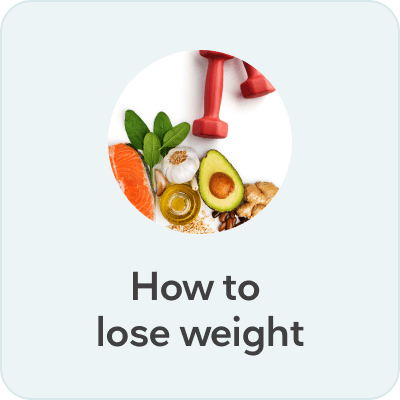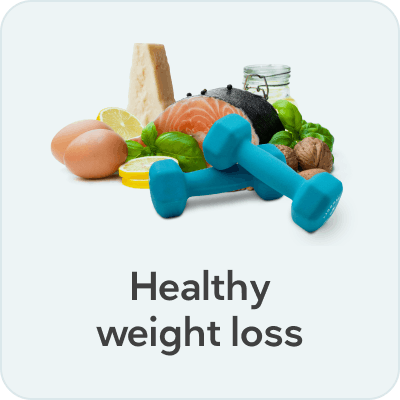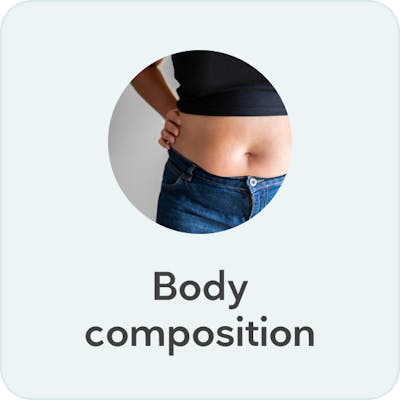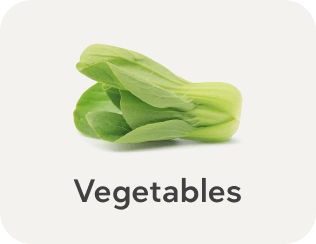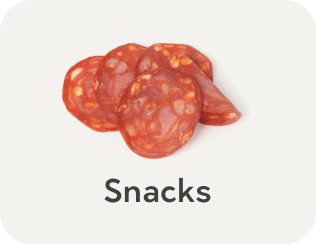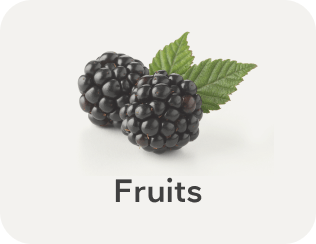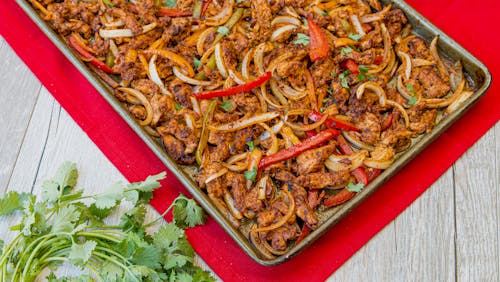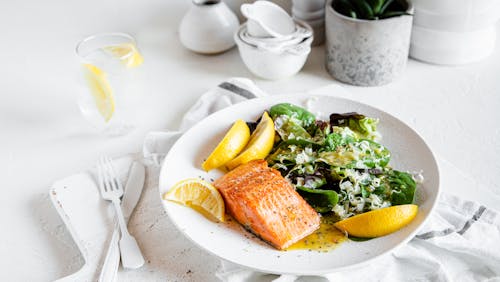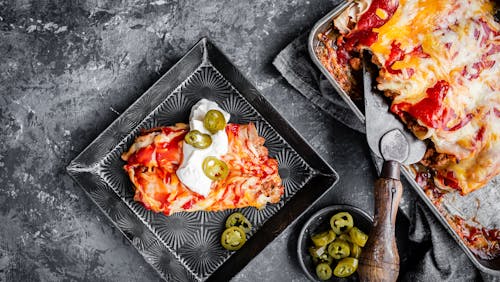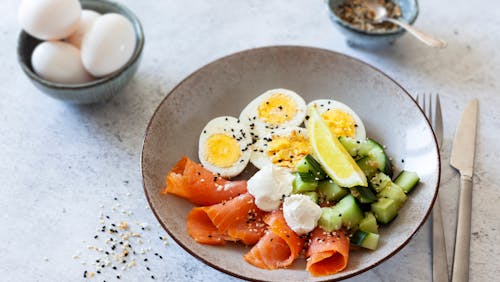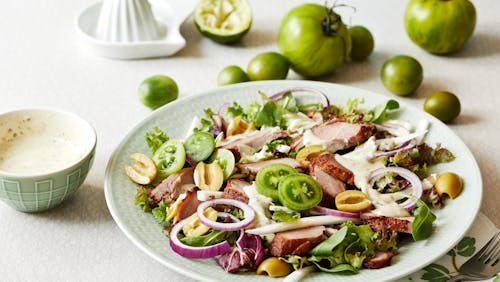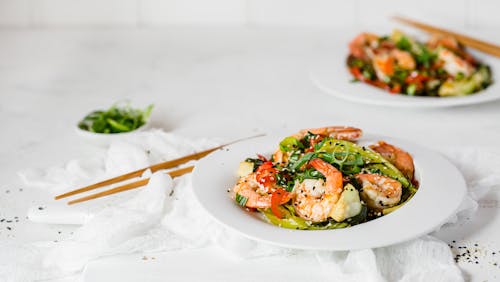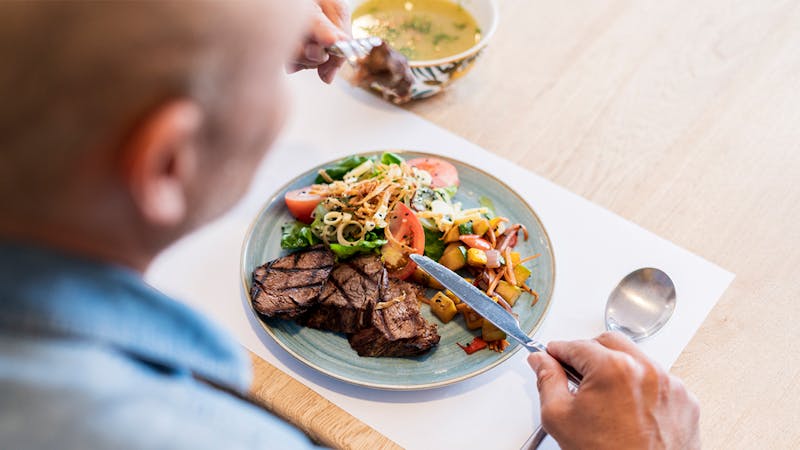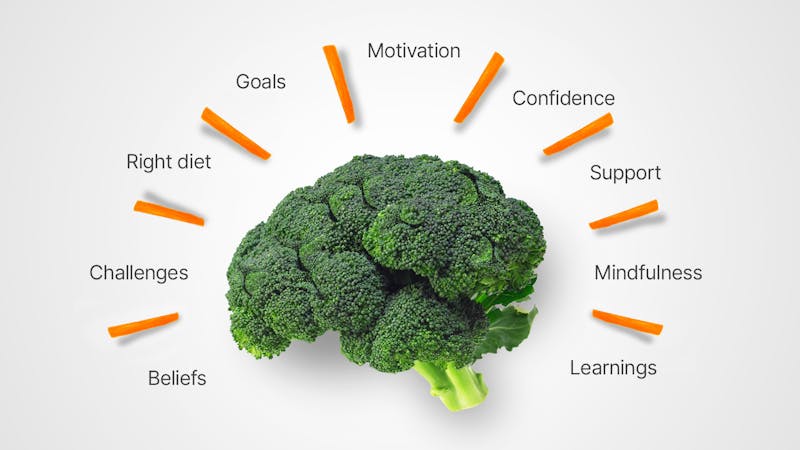The best foods for healthy weight loss
Evidence based
Key takeaways
What to eat and drinkEat meat, poultry, seafood, non-starchy vegetables, legumes, plain Greek yogurt, and cottage cheese. Drink water, coffee, tea, or broth. Learn more
What to avoid
Avoid high-carb, high-fat foods (donuts, ice cream, chips), sugar-sweetened beverages, fruit juice, sugar, refined carbs, and beer. Learn more
What to enjoy in smaller amounts
Eat smaller amounts of fruit, nuts, added fats, below-ground vegetables, whole grains, and cheese. Learn more
Do you want to lose weight in a healthy way — one that provides you with all the nutrition you need and allows you to eat foods you truly enjoy? Good news: Making smart food choices can help set you up for a pleasant, successful weight loss journey.
The key is to select foods that minimize calories while maximizing nutrition and satiety — that feeling of being comfortably full and satisfied. Fortunately, a wide variety of tasty, nutritious foods fit this description and can be included in most diets.
Our aim is to give you options that prioritize adequate protein, nutrition, and satiety — regardless of which diet approach you choose to follow.
In this guide, we’ll share the foods to eat most often, the foods to enjoy in smaller amounts based on your preferences and health goals, and the foods to avoid for healthy weight loss.
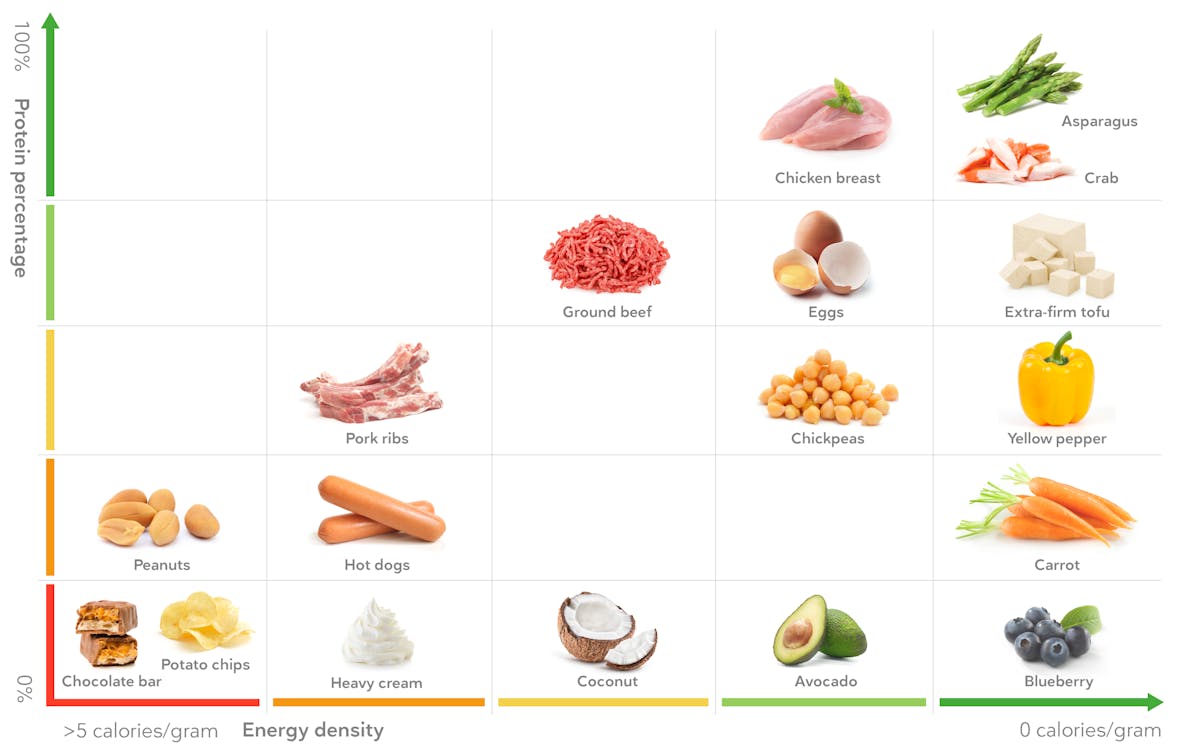

As you move up and to the right, you are choosing foods that are better for healthy weight loss. The upper right four squares contain some of the very best foods. The worst foods for weight loss are in the lower left corner.
Below, you’ll find lists of foods that are in the green zone for both protein percentage and energy density:
Meat & poultry
Processed meat
Seafood
Non-starchy vegetables
Beans, peas, lentils, & soy
Dairy foods
Healthy weight loss foods, defined
Weight loss occurs when you consume less energy (calories) than your body requires to maintain its current weight, which often involves improving food-related hormone levels and resting metabolic rate. The number of calories you burn can vary depending on several factors, including your size, age, body composition, and what you eat.1
To lose weight in a healthy way, you should create a calorie deficit while meeting your needs for essential nutrients like protein, vitamins, and minerals.2 And for your weight loss journey to be sustainable, you can’t go hungry or feel deprived.First off, it’s important to avoid ultra-processed, high-carb, high-fat foods that are rewarding and can drive overeating.3 But once you’ve eliminated those foods, what should you eat to get the best results?
Many diets, including low carb and others, feature healthy weight loss foods. These foods have several things in common that can help you feel full and satisfied so you naturally take in fewer calories:
- A high percentage of calories from protein: Protein provides essential amino acids that your body requires to build and maintain muscle, among other important functions. Healthy weight loss foods get a high percentage of their calories from protein. A food’s protein percentage tells you how much of its calories come from protein rather than fat and carbs.4 Why is it important to prioritize protein for healthy weight loss? Eating more protein can increase satiety, so you end up naturally eating less.5 It can also slightly boost your metabolism, and improve your body composition.6 On the other hand, if your protein intake is too low — due to eating large amounts of fat, carbs, or both — you may be driven to overeat in order to meet your protein needs.7 Protein-rich foods can provide long-term satiety due to hormonal changes that occur after eating. When your body breaks down protein from food into amino acids (the building blocks of protein), your digestive tract releases hormones that can make you feel full and satisfied for several hours.8 Also, many essential vitamins and minerals are naturally abundant in protein foods. For this reason, foods that get a lot of their calories from protein tend to have high nutrient density. This means they provide a lot of nutrition per calorie — making them ideal for healthy, sustainable weight loss.
- Low energy density: “Energy density” refers to the calories (or energy) in a specific weight of food. It’s usually expressed as the number of calories per gram of food (calories/gram). The lower the number, the fewer calories a given amount of food contains. Foods with more water or fiber have lower energy densities, whereas foods higher in fat have higher energy densities. This is because fat provides 9 calories per gram, protein and carbs each provide 4 calories per gram, water provides zero calories per gram, and fiber is estimated to provide less than 1 calorie per gram.9 In studies, when people are allowed to eat to satiety — as much as they need to feel full — they usually end up naturally taking in far fewer calories when they eat foods with low energy densities compared to foods with high energy densities.10 On the other hand, filling up on only very low-energy-density foods can leave you overly hungry as a result of not getting enough calories. For sustainable healthy weight loss, you’ll need to eat some nutritious foods with more calories to meet your minimal energy needs.
- High in fiber (plant foods): Fiber is the non-digestible portion of carbs found in plants. Because it’s bulky, it can stretch your stomach and help you feel full. Some studies suggest that eating more fiber may help you eat less and absorb slightly fewer calories from mixed meals.1112 While protein can lead to satiety that lasts for several hours, fiber can provide short-term satiety by stretching your stomach without triggering hormones that promote long-term fullness.13 And unlike protein, fiber isn’t considered an essential nutrient. So although fiber may play a role in healthy weight loss, selecting foods with high protein percentages and low energy densities is likely more important.

Healthy weight loss foods can be part of any diet
Fortunately, many of the best weight loss foods can fit all types of eating styles. Here are several examples of weight loss approaches that achieve some or all of the criteria above and have strong scientific evidence to support them:
- Keto and low carb: At Diet Doctor, we define a keto diet as one that provides less than 20 grams of net carbs (total carbs minus fiber) and a low-carb diet as one that provides less than 100 grams of net carbs per day. Keto and low-carb diets have been shown to help people lose weight and improve health markers.14
- High protein: We define a high-protein diet as one that provides at least 25% of calories from protein. Studies suggest that a high-protein diet can be an effective strategy for losing body fat and retaining muscle.15
- Intermittent fasting: Intermittent fasting involves going for extended periods without eating. Unlike other weight loss diets, intermittent fasting is based on when you eat rather than what you eat. There’s some solid scientific support behind intermittent fasting for weight loss.16 Intermittent fasting works well with any diet that ensures you get enough protein and other essential nutrients during the periods that you do eat.
- Mediterranean: The conventional Mediterranean diet features large amounts of vegetables, fruits, whole grains, fish, legumes, nuts, and olive oil, with moderate amounts of meat, eggs, dairy, and alcohol.According to some studies, following a Mediterranean diet may lead to weight loss.17 And it’s possible that you may get even better results by following a low-carb Mediterranean diet.18
- Plant-based (vegan or vegetarian): As their name suggests, plant-based diets contain mostly plants: beans, grains, nuts, seeds, vegetables, and fruits. Vegan diets exclude animal products of any kind, while vegetarian diets include eggs and/or dairy products but no meat, poultry, or seafood.Research on vegetarian and vegan diets demonstrates that they can help some people lose weight.19 Plus, you may get additional health and weight loss benefits by following a low-carb vegetarian or vegan way of eating.
More healthy weight loss guides
More healthy weight loss guides
The best foods and beverages for healthy weight loss
To lose weight in a healthy way, eat foods that provide the most nutrition and satiety for the fewest calories.
Additionally, choose foods that you enjoy, are easy to find and prepare, and fit the type of diet you prefer. All of these things are important for long-term satisfaction, sustainability, and success.
| Dark green | Light green | Yellow | Orange-red | Red | |
|---|---|---|---|---|---|
| Protein percentage | 51 to100% | 31 to 50% | 21 to 30% | 10 to 20% | Less than 10% |
| Energy density | 0.1 to 1.0 calories/gram | 1.1 to 2.3 calories/gram | 2.4 to 3.5 calories/gram | 3.6 to 5.0 calories/gram | More than 5.0 calories/gram |
For healthy weight loss, choose mostly foods with protein percentages and energy density ranges in the green columns.
Keep reading to learn all about the best food and beverage options for healthy weight loss.20
Meat and poultry
Do you love eating steak, chicken, pork, or lamb? Then you’ll be happy to hear that these foods — which are loaded with protein and other essential nutrients — are excellent for losing weight.
Eating more meat or poultry has been found beneficial for weight loss in several studies.21
To get the best results, consider leaner cuts most of the time. They provide more protein, vitamins, and minerals for fewer calories than fattier meats.
For instance, fattier pork ribs are only 23% protein, while leaner pork tenderloin is 71% protein. This means you’ll get more than twice as many calories per serving of ribs compared to an equal serving of tenderloin.
So while eating pork ribs can certainly make you feel full, you’ll end up taking in far more calories to get that satisfied feeling than if you choose a leaner cut of meat. Remember, your goal for healthy weight loss is to maximize satiety per calorie.
By all means, feel free to enjoy ribs, ribeye steak, and prime rib occasionally. But try to choose meats from the list below most of the time. These meats are in the green zone for both protein percentage and energy density:
- Chicken or turkey breast, thigh, drumstick, and wings (with or without skin)
- Ground chicken and turkey
- Chicken and beef liver
- Lean steaks, such as eye of round, top sirloin, and filet mignon
- Lean ground beef or pork
- Pork tenderloin, chops, and roast
- Lamb tenderloin, leg, and shank
- Bison, buffalo, and other game (all cuts)
- Veal (all cuts)
Protein percentage range
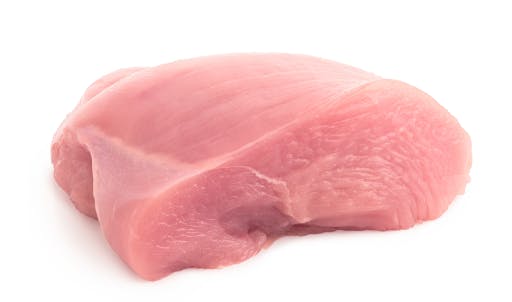


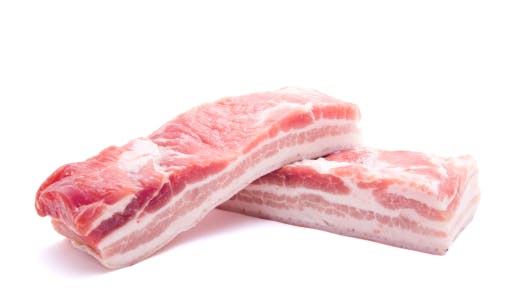


Energy density range (calories/gram)



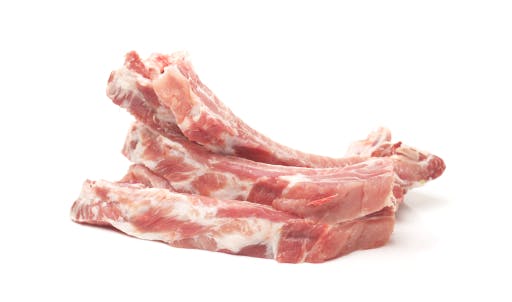


What about processed meats like bacon, sausage, and salami? The truth is that most processed meats are too low in protein and other nutrients to make this list. Here are some delicious green-zone (weight-loss-friendly) options to enjoy instead:
- Canadian bacon
- Lean deli meats (chicken, turkey, roast beef, and ham)
- Pastrami
- Prosciutto, chicken, turkey sausage or turkey bacon
- Corned beef
Protein percentage range
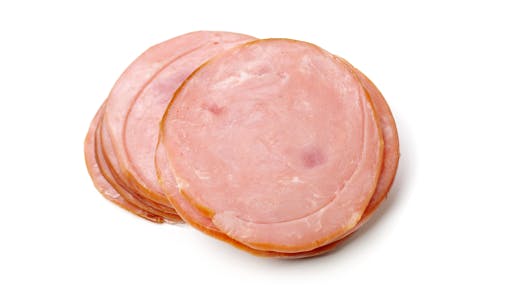


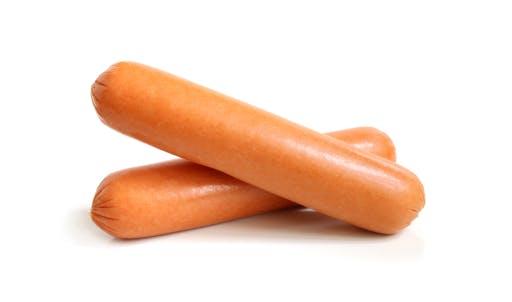


Energy density range (calories/gram)



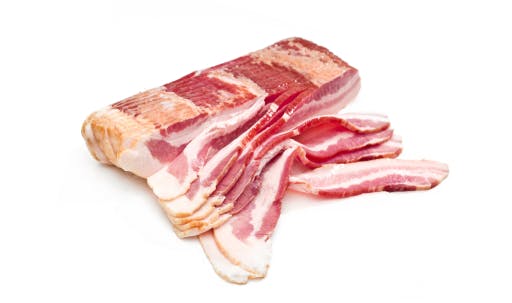


No problem!
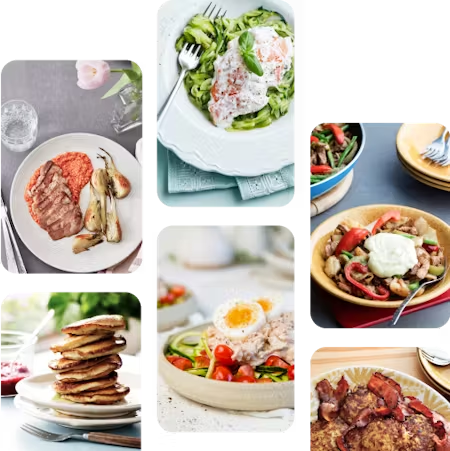
Seafood
Fish and shellfish are rich in protein and several essential minerals, including iodine. They’re also prized for their delicious flavors, which span from delicate to robust.
Including seafood in your diet can be a winning weight loss strategy. That’s because seafood provides lots of protein with little fat and carbs, no matter what type you choose.
Although most shellfish and white fish have extremely high protein percentages and low energy densities, fatty fish like salmon, sardines, and herring have solid values, too.
For example, even farm-raised Atlantic salmon (the type of salmon that’s highest in fat) is still a good choice, with 43% protein and about 200 calories per 100-gram serving. Plus, salmon and other fatty fish provide high amounts of essential omega-3 fatty acids, which have been linked to health benefits.24
Make fish and shellfish selections based on the types you like, what’s available in your area, and your budget. (Canned fish is a great, inexpensive option). Just stay away from seafood that’s been battered or breaded and deep-fried. Also, avoid or limit high-mercury fish like bigeye tuna, King mackerel, swordfish, and shark.
Here is our list of the best seafood for healthy weight loss – all of which are in the green zone for protein percentage and energy density:
- White fish, including flounder, sole, halibut, snapper, tilapia, cod, bass, trout, and light tuna
- Fatty fish, including anchovies, salmon, sardines, herring, and ahi tuna
- clams
- crab
- lobster
- mussels
- octopus
- oysters
- scallops
- shrimp
- squid
Protein percentage range
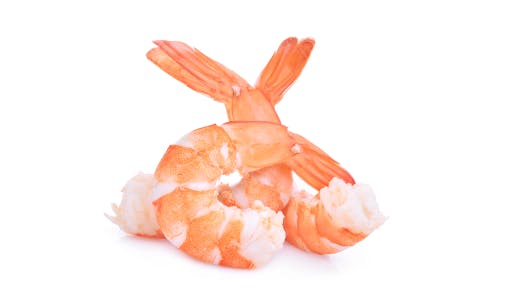


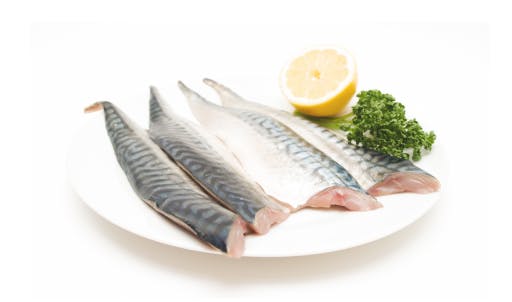


Energy density range (calories/gram)






Non-starchy vegetables
Non-starchy vegetables are considered great for weight loss, and for good reason. First, vegetables are the least energy-dense of all foods, which means you can eat large amounts for very few calories.
Although non-starchy vegetables don’t provide as much protein per serving as other healthy weight loss staple foods, they provide a lot of protein and nutrients per calorie. However, they’re also low in at least one of the essential amino acids that your body requires to stay healthy.26
Vegetables are also a good source of fiber, which can help you feel full.27
Finally, non-starchy vegetables are an excellent fit for all diets, including keto, Mediterranean, and vegan, among others.
- asparagus
- broccoli
- Brussels sprouts
- cabbage
- cauliflower
- green beans
- leafy greens (including spinach)
- zucchini
Protein percentage range






Energy density range (calories/gram)



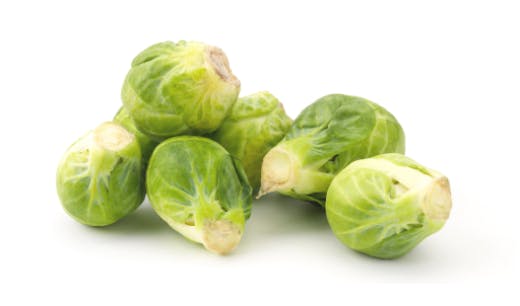


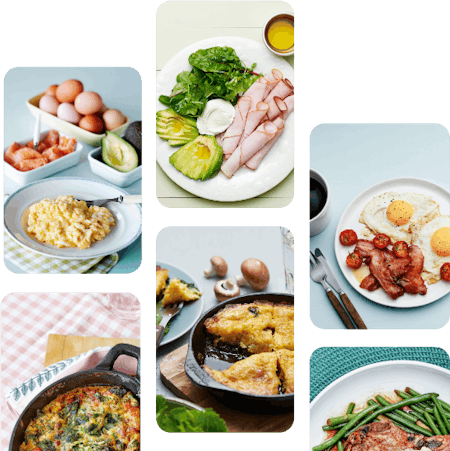
Beans, peas, lentils, and soy
Legumes — beans, peas, lentils, and soy — are a good source of protein, vitamins, minerals, and fiber.
In trials, boosting legume intake has been found to help people lose weight.29
Why are legumes considered a healthy weight loss food? Many of them provide a lot of satiety per calorie due to their high protein percentages and fiber content. They also rank well on the energy density scale.
Beans, peas, and soy are enjoyed by many people, and they’re a major source of plant-based protein in vegan and vegetarian diets. However, with the exception of soy, legumes are low in one or more of the essential amino acids that your body needs.30
Because they’re higher in net carbs than most healthy weight loss foods, beans, peas, and lentils aren’t a great fit for a strict keto diet unless consumed in very small amounts.
We recommend eating minimally processed foods no matter what type of diet you follow. However, if you’re a vegetarian or vegan who wants to minimize carbs and maximize satiety, consider occasionally supplementing with plant protein powders, such as pea protein.
The best healthy weight loss beans, peas, lentils, and soy have protein percentages and energy densities in the green zone:
- lupini beans
- black beans
- lentils
- split peas and green peas
- tofu (extra firm)
- tempeh
- nattō
- edamame beans
- canned black soybeans
- plant-based protein powder made from peas, hemp, pumpkin seeds, and sunflower seeds
Protein percentage range
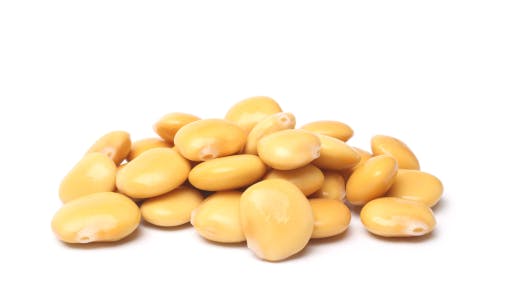





Energy density range (calories/gram)



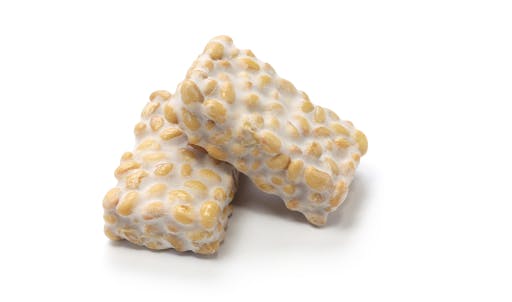


Eggs
Looking for a nutritious, inexpensive, and versatile food that can help you lose weight? You can’t go wrong with eggs. Eating protein-packed eggs can help you feel full for hours.32 In some studies, eating eggs for breakfast has been found to help people naturally take in fewer calories over the course of the day.33
For healthy weight loss, is it better to eat egg whites or whole eggs? The answer isn’t as clear-cut as it may seem.
Egg whites contain more protein and provide fewer calories than whole eggs. On the other hand, whole eggs are undeniably tastier and provide more vitamins and minerals than egg whites. So eating whole eggs — or a combination of whole eggs and egg whites — may be best to maximize satiety, nutrition, and happiness with your diet.
Protein percentage range
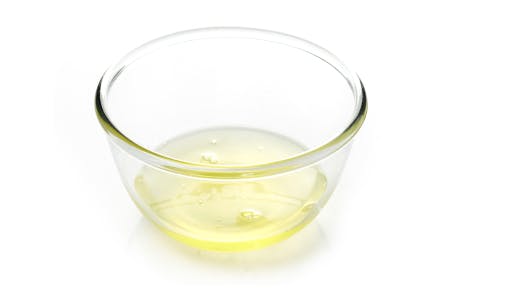


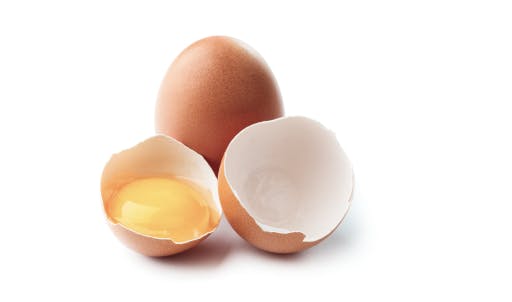


Energy density range (calories/gram)






Dairy foods
Dairy products taste great and provide protein, calcium, magnesium, and other important nutrients. In some studies, eating more dairy foods has been found to boost weight loss.34
Fermented dairy products, such as cheese and yogurt, have had most of their lactose (milk sugar) removed. Therefore, compared to milk, they are lower in carbs and get more of their calories from protein.
Should you choose nonfat, low-fat, or full-fat dairy products to lose weight? The answer will depend on the type of diet you eat and your food preferences.
Low-fat dairy foods provide more protein per calorie and are less energy dense than full-fat dairy products. So when it comes to maximizing satiety per calorie, low-fat dairy wins.
For this reason, making low-fat choices works best for most weight loss diets. Just be sure to read labels and avoid low-fat yogurt with added sugar and starch.
However, people who eat keto or low-carb diets may prefer to eat full-fat dairy protein foods and cut back on added dairy fats, such as butter and cream, to lose weight.
Whey protein supplements and shakes fall under the “dairy” category. Although whey provides more protein per calorie than dairy foods, it’s more processed.
Our advice? Choose dairy foods over whey protein supplements most of the time, no matter what type of diet you eat.
Here are the best green-zone dairy food options for healthy weight loss:
- plain nonfat Greek yogurt (0% fat)
- plain low-fat Greek yogurt (2% fat)
- plain full-fat Greek yogurt (5% fat)
- plain nonfat cottage cheese (0% fat)
- plain low-fat cottage cheese (2% fat)
- plain full-fat cottage cheese (4% fat)
- reduced-fat cheese
- unflavored whey protein powder (isolate or concentrate)
Protein percentage range
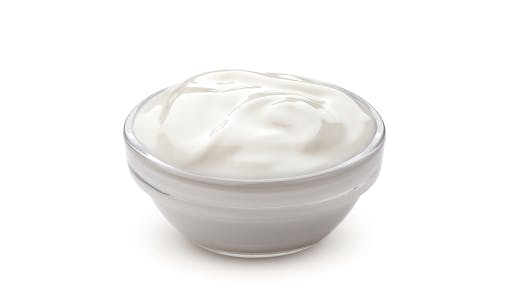





Energy density range (calories/gram)






Water and other non-caloric beverages
The best beverages for losing weight have zero (or nearly zero) calories.
1. Water
Reach for water most often. It’s calorie-free, widely available, and the ultimate thirst quencher. Plus, some studies suggest that drinking water may be helpful for weight loss.36 Add a squeeze of lemon or lime, if you like.
2. Coffee and tea
For a nearly calorie-free beverage that provides flavor and an energy boost, drink coffee or tea. According to research, these caffeinated drinks might help you burn slightly more calories.37 They may also possibly reduce your appetite, although more research on this is needed.38
3. Broth
Drinking broth or bouillon can help you stay well hydrated and get a bit of protein, too. Choose beef, chicken, or vegetable stock, or bone broth. Broth has about 10 to 35 calories and 1 to 9 grams of protein, depending on how it’s made.
Foods to consume in smaller amounts for weight loss
The foods in this section can be part of a healthy weight loss approach. How much from each category to include — if any at all — will depend on the type of diet you eat, along with your preferences and goals.
Fruit
Fruit is low in protein but high in water and fiber. So, you can eat a large amount of fruit for relatively few calories. Even fatty fruits like avocado and olives – often grouped with vegetables because they’re not sweet – have fairly low calorie densities due to their fiber and water content.
Most sweet fruits, aside from berries, are high in carbs. Eating a few fruits per day is fine if you follow a high-protein, Mediterranean, plant-based, or liberal low-carb diet. But aim for a maximum of one to two servings of low-carb fruits daily on a keto or very low-carb diet. That’s about one cup of berries, 20 large olives, half a medium avocado, or 3 tablespoons of shredded unsweetened coconut.
Protein percentage range
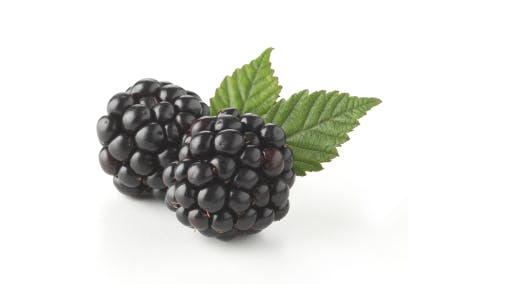


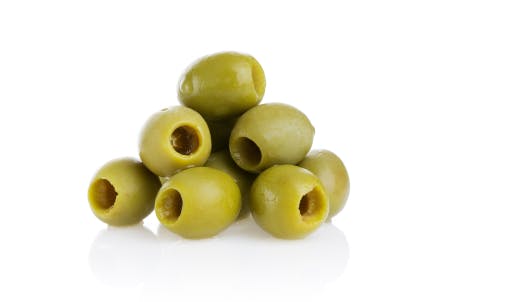


Energy density range (calories/gram)



strawberries, melon 0.3
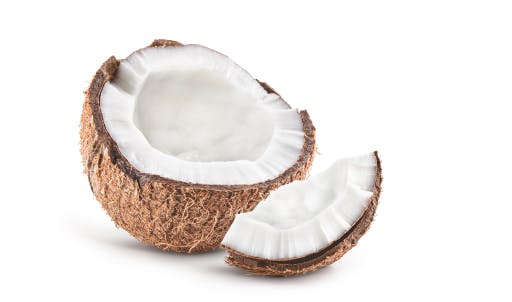


Nuts
Nuts supply your body with some protein and nutrients, but they don’t provide a lot of satiety per calorie. Why? Their high fat content drives up their calorie counts, which drives down their protein percentages. Nuts also have extremely high energy densities. So you’re likely to consume several hundred calories before you start feeling satisfied.39 Plus, it can be tough to stop eating nuts once you start.
For healthy, effective weight loss, limit nut intake to a small handful per day, at most. And to prevent going overboard, eat them from a small bowl instead of from the container.
Protein percentage range
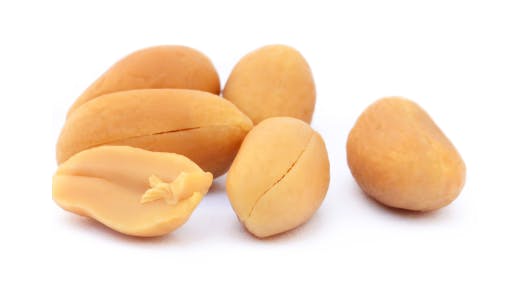


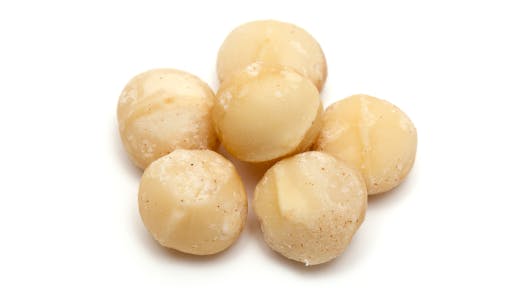


Energy density range (calories/gram)






Starchy vegetables
Potatoes, sweet potatoes, onions, beets, and other starchy vegetables are higher in carbs and lower in protein than non-starchy vegetables. Indeed, less than 20% of the calories in starchy vegetables come from protein. However, their calorie densities are low, and some types are high in fiber.
Eat starchy vegetables in small amounts, if at all, on a keto or low-carb diet. If you eat a plant-based, high-protein, or Mediterranean diet, you can enjoy starchy vegetables in modest amounts that allow you to achieve your health goals (such as controlling blood sugar levels if you have diabetes or prediabetes).
Protein percentage range



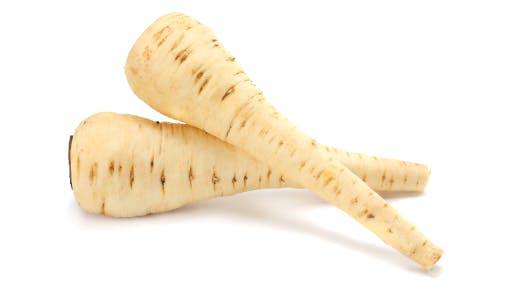


Energy density range (calories/gram)
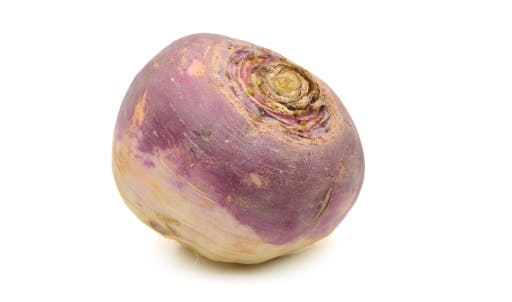


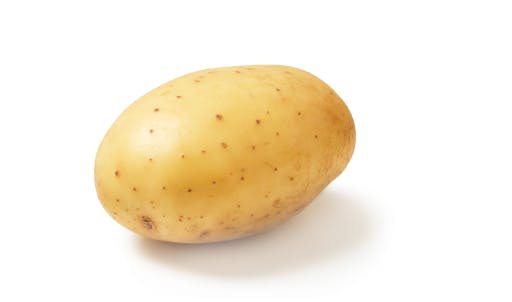


Whole grains
While whole grains pack more fiber than refined grains, they provide little protein or other nutrients. Plus, most of their calories come from carbs. If you eat a keto or low-carb diet, you’re probably best off avoiding grains altogether. Even if you don’t follow a low-carb way of eating, keep whole grain intake modest when trying to lose weight.
Protein percentage range
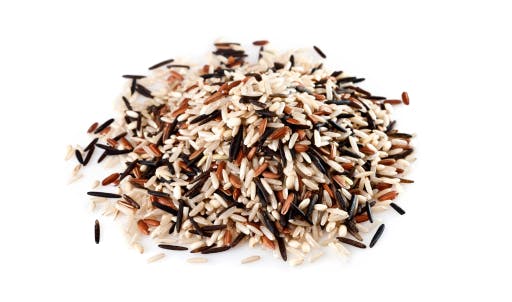


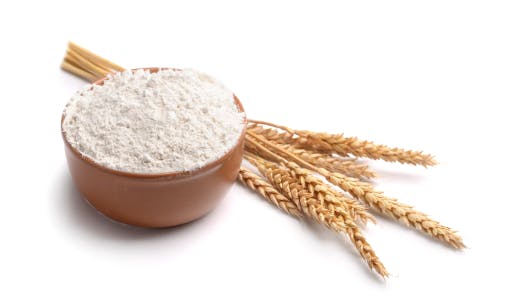


Energy density range (calories/gram)






Cheese
Many people would probably list cheese as one of their favorite foods. Unfortunately, most types of cheese don’t provide a lot of satiety per calorie because they have much more fat than protein. Additionally, some people find that cheese is easy to overeat and causes cravings for more.42 Although it shouldn’t be considered a go-to food, you can enjoy a small serving of cheese most days without jeopardizing weight loss.
Protein percentage range
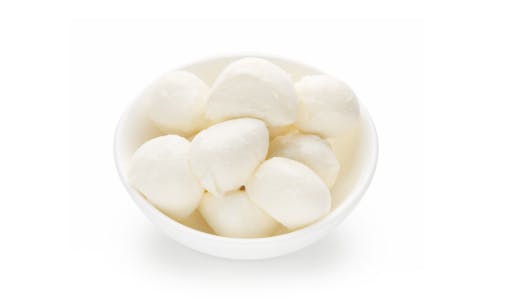


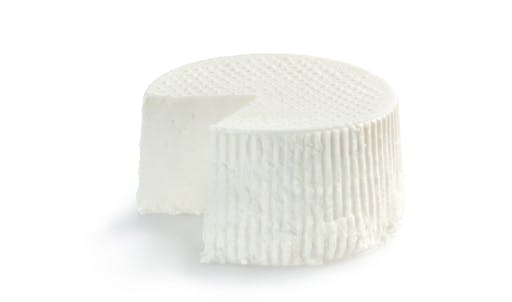


Energy density range (calories/gram)



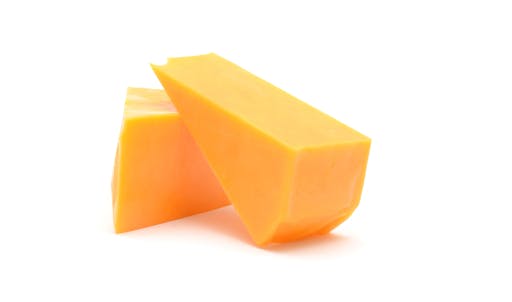


Added fats (butter, cream, oil)
Whether used in recipes or added at the table, fat can make vegetables and other foods taste delicious. However, butter, cream, and oil are nearly 100% fat with virtually no protein. So they’re an extremely concentrated calorie source.
While you don’t need to avoid added fats altogether, keep amounts small to modest if you’re trying to lose weight, even if you follow a keto or low-carb diet. Just add enough for flavor. Remember, your goal is to burn stored body fat rather than burn lots of fat in the food you eat.44
Protein percentage range
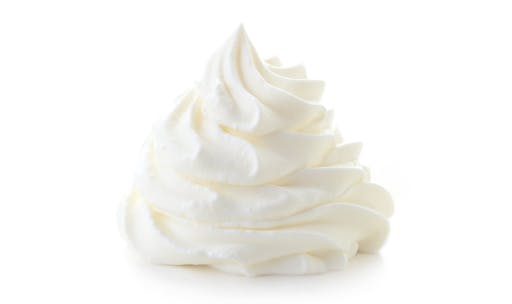





Energy density range (calories/gram)






including olive oil 8.8
Low-carb alcohol
Minimize alcohol intake when trying to lose weight. It provides calories without any nutrition. Additionally, alcohol can sometimes interfere with weight loss.45It also tends to increase appetite and decrease inhibitions, which may lead you to overeat without even realizing it.46
If you want to indulge occasionally, drink low-carb alcohol like dry red or white wine or plain spirits. And limit your alcoholic beverage intake to one drink per day.
Protein percentage range
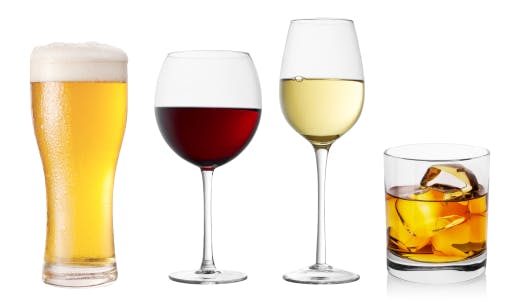

Energy density range (calories/gram)



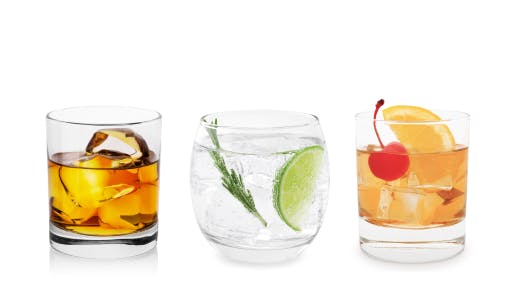


and other spirits2.5-3.0

Foods to avoid for healthy weight loss
The worst foods for losing weight are highly processed and provide lots of empty calories with little protein and other nutrients. Research suggests that consuming these foods may cause overeating that results in weight gain.47
Here are the foods and beverages to avoid when trying to lose weight:
Ultra-processed high-carb, high-fat foods
Foods that are high in both fat and refined carbs are your number one weight loss enemy. The high-carb plus high-fat combination may drive you to overeat due to being so delicious and providing very little satiety per calorie. Indeed, some researchers suggest that these highly palatable foods can be addictive.48 Unfortunately, they’re among the least expensive and most extensively marketed, widely available foods around.
Some common examples are cookies, cakes, pie, potato chips, candy bars, and ice cream, although many similar products exist. Steer clear of these foods if you want to lose weight and improve your health.
Protein percentage range
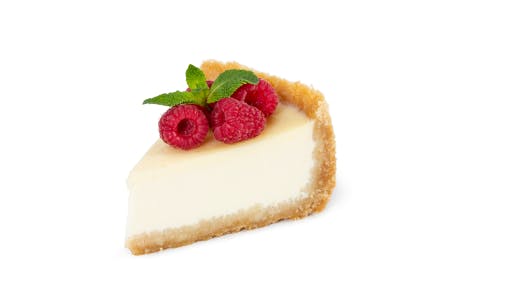


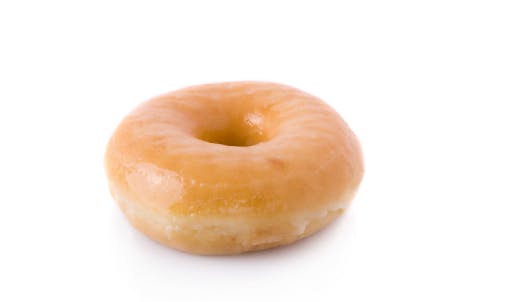


deep-fried desserts 3%
Energy density range (calories/gram)
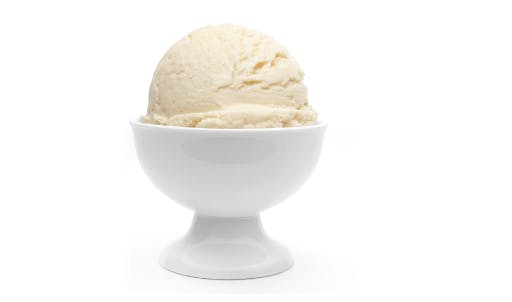





and many others5+
“Liquid sugars”
Soft drinks and other sugar-sweetened beverages get 100% of their calories from sugar. These “liquid sugars” can be very easy to over consume. In addition to soft drinks, stay away from sweet tea, punch, lemonade, energy drinks, sports drinks, and flavored coffee drinks. Avoid fruit juice, too — including 100% unsweetened juice, which is loaded with “natural” sugar. Finally, avoid sweet alcoholic drinks.
Sugary beverages have deceptively low energy densities because their sugar is diluted by a lot of water. However, they’re still loaded with empty calories.
Protein percentage range
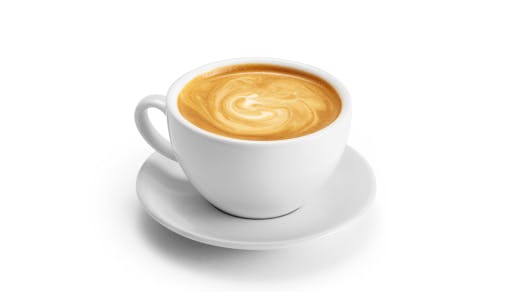


made with milk5-10%
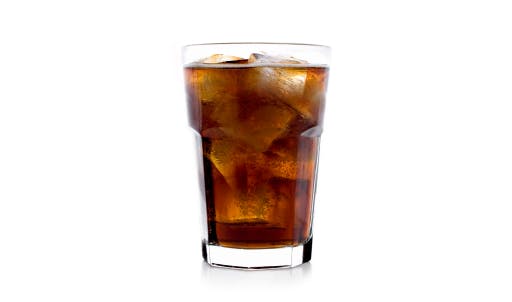


beverages0%
Foods high in sugar and refined carbs
Avoid all types of sugar, including honey, maple syrup, and coconut sugar. Also, stay away from products with added sugars, such as jams and jellies, candy, and “lite” treats marketed as healthy options, like nonfat frozen yogurt. Finally, read labels for hidden sugars in condiments, salad dressings, and packaged foods.
Processed starchy foods are also a no-go for weight loss. This group includes white bread and pasta, rice, fat-free chips, crackers, and similar snack foods. All are low in nutrients and provide little satiety per calorie. In fact, they may potentially increase your hunger and cravings.49
Protein percentage range
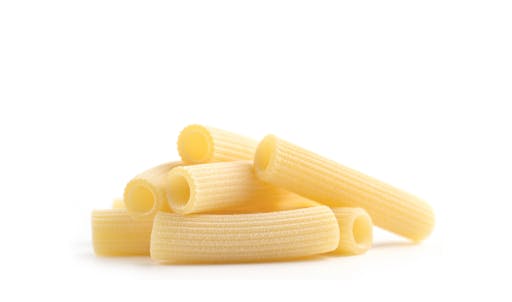


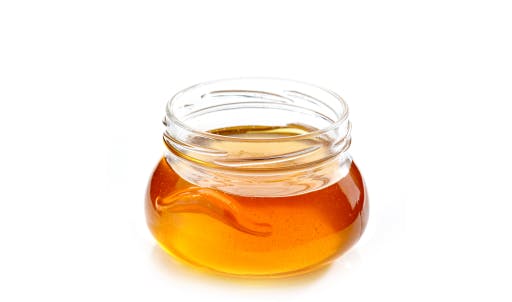


maple syrup 0%
Energy density range (calories/gram)



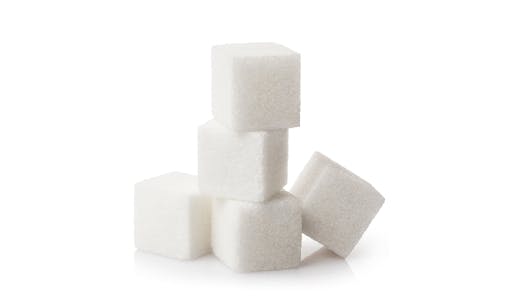


Beer
Beer is sometimes called “liquid bread” because it contains carbs that come from grains. Like sugary beverages, beer has a deceptively low energy density because it’s diluted with lots of water.
Although light beers are lower in carbs, it’s best to minimize your beer intake when trying to lose weight.
Protein percentage range
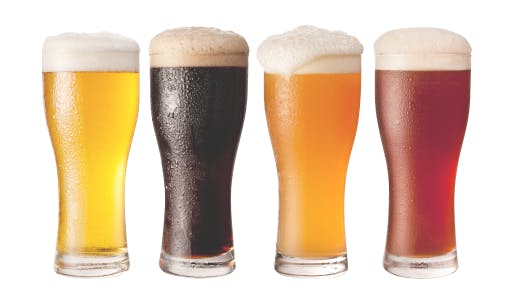

Healthy weight loss recipes
Do you want some inspiration for creating meals, using healthy weight loss foods? We’ve got you covered with delicious recipes designed to maximize satiety per calorie:
Summary
When it comes to successful weight loss, knowing what to eat is key. Choosing foods that maximize satiety per calorie can help you lose weight in a healthy way.
Your best weight loss foods are high in protein and other essential nutrients. They’re tasty and fit your preferred way of eating. Plus, they help you feel full and satisfied so that you naturally take in fewer calories.
Fortunately, there’s a long list of healthy weight loss foods to choose from. Eat your fill of the nourishing foods you love, and you’ll be on your way to healthy, sustainable weight loss.

The best foods for healthy weight loss - the evidence
This guide is written by Franziska Spritzler, RD and was last updated on October 17, 2022. It was medically reviewed by Dr. Bret Scher, MD on October 27, 2021.
The guide contains scientific references. You can find these in the notes throughout the text, and click the links to read the peer-reviewed scientific papers. When appropriate we include a grading of the strength of the evidence, with a link to our policy on this. Our evidence-based guides are updated at least once per year to reflect and reference the latest science on the topic.
All our evidence-based health guides are written or reviewed by medical doctors who are experts on the topic. To stay unbiased we show no ads, sell no physical products, and take no money from the industry. We're fully funded by the people, via an optional membership. Most information at Diet Doctor is free forever.
Read more about our policies and work with evidence-based guides, nutritional controversies, our editorial team, and our medical review board.
Should you find any inaccuracy in this guide, please email andreas@dietdoctor.com.
American Journal of Clinical Nutrition 2005: Factors influencing variation in basal metabolic rate include fat-free mass, fat mass, age, and circulating thyroxine but not sex, circulating leptin, or triiodothyronine[observational study; weak evidence] ↩
Essential nutrients are vital to health and must be obtained from your diet because your body can’t make them on its own. ↩
Current Obesity Reports 2021: Ultra‑processed Foods, Weight Gain, and Co‑morbidity Risk[overview article; ungraded] ↩
Fiber isn’t included in the calorie count because it’s generally accepted that humans don’t produce the enzymes needed to break down fiber:
Gut Microbes 2017: Dietary fiber and prebiotics and the gastrointestinal microbiota [overview article; ungraded] Instead, fiber passes through your system until it reaches your colon, where it is either fermented by bacteria or eliminated, depending on the type: International Journal of Molecular Sciences 2017: Gut fermentation of dietary fibres: physico-chemistry of plant cell walls and implications for health [overview article; ungraded] ↩American Journal of Clinical Nutrition 2008: Protein, weight management, and satiety [overview article; ungraded]
In one study, increasing protein from 15% to 30% resulted in a significant drop in calorie intake: American Journal of Clinical Nutrition 2005: A high-protein diet induces sustained reductions in appetite, ad libitum caloric intake, and body weight despite compensatory changes in diurnal plasma leptin and ghrelin concentrations [nonrandomized study, weak evidence] ↩This has been shown in systematic reviews of randomized controlled trials (RCTs), which are considered the strongest form of evidence: Journal of the American College of Nutrition 2004: The effects of high protein diets on thermogenesis, satiety and weight loss: a critical review [systematic review of randomized trials; strong evidence] Nutrition Reviews 2016: Effects of dietary protein intake on body composition changes after weight loss in older adults: a systematic review and meta-analysis [systematic review of randomized trials; strong evidence] ↩
A series of 39 experimental trials showed that this occurs in overweight, obese, and lean people alike: Obesity Reviews 2014: Protein leverage and energy intake [meta-analysis of non-randomized trials; weak evidence] One review of 116 diets in humans suggests that people eat almost three times more calories on a low-protein diet than on a high-protein diet: Annual Review of Nutrition 2016: Nutritional ecology and human health [overview article; ungraded] ↩
The American Journal of Clinical Nutrition 2013:Contribution of gastroenteropancreatic appetite hormones to protein-induced satiety [randomized trial; moderate evidence] Obesity (Silver Spring) 2013: High protein intake stimulates postprandial GLP1 and PYY release [randomized crossover trial; moderate evidence] European Journal of Clinical Nutrition 2015:Dietary whey protein influences plasma satiety-related hormones and plasma amino acids in normal-weight adult women [randomized trial; moderate evidence] Nutrients 2018:Satiating effect of high protein diets on resistance-trained subjects in energy deficit [randomized trial; moderate evidence] ↩
Foods contain both soluble and insoluble fiber. The majority of dietary fiber is insoluble fiber, which provides zero calories per gram. Soluble fiber is believed to provide roughly 1 to 2 calories per gram as a result of being fermented into short-chain fatty acids in the colon:
Journal of Nutrition and Metabolism 2019: The role of fiber in energy balance [overview article; ungraded] ↩In short-term trials, overweight and lean women ended up eating fewer calories when they were allowed as much food as they wanted at low-energy-density meals compared to high-energy-density meals – even though they reported having similar hunger and fullness levels after all meals: The American Journal of Clinical Nutrition 1998: Energy density of foods affects energy intake in normal-weight women [randomized trial; moderate evidence] The American Journal of Clinical Nutrition 2001:Energy density of foods affects energy intake across multiple levels of fat content in lean and obese women [randomized trial; moderate evidence] In a one-year trial, overweight women who cut back on fat and increased the amount of low-energy-density foods in their diet lost more weight than women who simply cut back on fat, even though both groups were allowed to eat as much as they wanted: The American Journal of Clinical Nutrition 2007:Dietary energy density in the treatment of obesity: a year-long trial comparing 2 weight-loss diets [randomized trial; moderate evidence]
In a small study of 10 overweight and 10 normal weight adults, on average, participants took in only half as many calories when they ate mostly low-energy density foods (vegetables, dried beans, fruits, and lean meats) compared to mostly high-energy-density foods (fattier meats and sweets) for five days: The American Journal of Clinical Nutrition 2001:Energy density of foods affects energy intake across multiple levels of fat content in lean and obese women [randomized trial; moderate evidence] ↩Obesity Reviews 2011: Effects of dietary fibre on subjective appetite, energy intake and body weight: a systematic review of randomized controlled trials [systematic review of randomized trials; strong evidence] International Journal of Obesity 2014: Satiety and energy intake after single and repeated exposure to gel-forming dietary fiber: post-ingestive effects [randomized trial; moderate evidence] Nutrition 2018: A nonrestrictive, weight loss diet focused on fiber and lean protein increase [non-controlled study; weak evidence] The Journal of Nutrition 1997: Dietary fiber decreases the metabolizable energy content and nutrient digestibility of mixed diets fed to humans [randomized trial; moderate evidence] ↩
Importantly, none of these studies tested the effects of fiber in people who eat low-carb diets. So it’s unknown whether the potential benefits of increasing fiber extend to low-carb eaters. On the other hand, people on low-carb diets are generally encouraged to eat plenty of high-fiber vegetables. ↩
Trends in Food Science and Technology 2015: Optimising foods for satiety [overview article; ungraded] ↩
Systematic reviews of RCTs conclude that keto and low-carb diets can be effective for weight loss:
PLoS One 2015: Dietary intervention for overweight and obese adults: Comparison of low-carbohydrate and low-fat diets. A meta-analysis [strong evidence] Obesity Reviews 2016: Impact of low‐carbohydrate diet on body composition: meta‐analysis of randomized controlled studies [strong evidence for fat mass loss on very low-carb diets in particular] ↩Journal of the American College of Nutrition 2004: The effects of high protein diets on thermogenesis, satiety and weight loss: a critical review [systematic review of randomized trials; strong evidence]
Nutrition Reviews 2016: Effects of dietary protein intake on body composition changes after weight loss in older adults: a systematic review and meta-analysis [systematic review of randomized trials; strong evidence] ↩In a 2020 review of 18 RCTs, participants who practiced intermittent fasting lost between 3.2% to 13% of their body weight, which was similar to participants who followed daily calorie restriction:
Canadian Family Physician 2020: Intermittent fasting and weight loss: Systematic review [strong evidence] The following review also showed similar weight loss for the continuous calorie restriction and intermittent fasting groups: Obesity Reviews 2018: Short‐term intermittent energy restriction interventions for weight management: a systematic review and meta‐analysis [strong evidence] ↩A 2015 systematic review of clinical trials in people with type 2 diabetes found that a Mediterranean diet was one of only two diets that led to a 5% or greater loss of weight in 12 months. People randomized to a Mediterranean diet lost an average of 13.5 pounds (6.2 kilos) and achieved significant improvements in hemoglobin A1c (HbA1c), lipids, and blood pressure:
Journal of the Academy of Nutrition and Dietetics 2015: Lifestyle weight-loss intervention outcomes in overweight and obese adults with type 2 diabetes: a systematic review and meta-analysis of randomized clinical trials [strong evidence] ↩In one trial, overweight people with diabetes followed either a low-carb Mediterranean diet, a traditional Mediterranean diet, or a low-fat diet based on American Diabetes Association (ADA) recommendations for one year. At the end of the study, people in the low-carb Mediterranean diet group lost an average of 22 pounds (10.1 kilos), while those in the traditional Mediterranean diet group lost an average of 16 pounds (7.3 kilos), and those in the ADA diet group lost 17 pounds (7.7 kilos):
Diabetes, Obesity & Metabolism 2010: A low carbohydrate Mediterranean diet improves cardiovascular risk factors and diabetes control among overweight patients with type 2 diabetes mellitus: a 1-year prospective randomized intervention study [randomized trial; moderate evidence] ↩Journal of General Internal Medicine 2016: Vegetarian diets and weight reduction: a meta-analysis of randomized controlled trials [strong evidence]
Diabetes, Metabolic Syndrome and Obesity 2020: Effects of plant-based diets on weight status: A systematic review [strong evidence] ↩We obtained nutrition information from FoodData Central, the USDA’s nutrient profile database. ↩
In a 16-week weight loss trial, 120 overweight women were assigned to either eat four or more lean beef servings per week or to restrict all red meats. Despite similar weight loss of 8.7% in both groups, women in the lean beef group reported fewer cravings and fewer feelings of deprivation compared to those who limited red meat intake:
Nutrients 2018: Hunger, food cravings, and diet satisfaction are related to changes in body weight during a 6-month behavioral weight loss intervention: The Beef WISE study [randomized trial; moderate evidence]
A trial in overweight and obese people found that including 500 grams (17.6 ounces or approximately three 6-ounce servings) of lean red meat per week as part of a Mediterranean diet resulted in equal weight loss and reduction in metabolic risk factors compared to following the same basic diet but eating much less red meat:
American Journal of Clinical Nutrition 2018: A Mediterranean-style eating pattern with lean, unprocessed red meat has cardiometabolic benefits for adults who are overweight or obese in a randomized, crossover, controlled feeding trial [moderate evidence]
Another trial found that eating a poultry-rich, high-protein diet helped people lose body fat:
Biological Trace Element Research 2011: Frequent consumption of selenium-enriched chicken meat by adults causes weight loss and maintains their antioxidant status [randomized trial; moderate evidence] ↩
Choose meats and poultry that are at least 35% protein most of the time. Learn more in our guide to the best high-protein poultry and red meat ↩
Choose processed meats that are at least 35% protein most of the time. Learn more in our guide to the best high-protein processed meats ↩
Some studies suggest that omega-3 fats may provide health benefits, or at least improve certain markers of heart health:
Metabolism 2014: A fish-based diet intervention improves endothelial function in postmenopausal women with type 2 diabetes mellitus: a randomized crossover trial [moderate evidence]
British Journal of Nutrition 2012: Dietary inclusion of salmon, herring and pompano as oily fish reduces CVD risk markers in dyslipidemic middle-aged and elderly Chinese women [randomized trial; moderate evidence]
Nutrition Research 2010: Inclusion of Atlantic salmon in the Chinese diet reduces cardiovascular disease risk markers in dyslipidemic adult men [randomized trial; moderate evidence] ↩
Choose fish and shellfish options that are at least 35% protein most of the time. Learn more in our guide to the best high-protein seafood ↩
There are nine essential amino acids that you must get from food on a daily basis. Although most vegetables contain many of these essential amino acids, they provide only small amounts of one or more of them.
In one study, researchers found that spinach contained all nine essential amino acids, although methionine was only present in small amounts:
Food Chemistry 2011: Amino acid profile of raw and as-eaten products of spinach (Spinacia oleracea L.) [laboratory study; ungraded]
In an older study, cauliflower was found to be high in five of the nine essential amino acids, while carrots were found to be low in all of the essential amino acids:
The Journal of Nutrition 1949: The essential amino acid content of several vegetables [laboratory study; ungraded] ↩
In a small study, people who ate a large portion of spinach at lunch felt full, which researchers attributed in part to the increased fiber in the meal:
International Journal of Food Sciences and Nutrition 1995: Satiety effects of spinach in mixed meals: comparison with other vegetables [non-controlled study; weak evidence] ↩
Although some vegetables have especially high protein percentages, all non-starchy vegetables are good options for weight loss. Learn more in our complete guide to the best high-protein vegetables ↩
One review of 21 trials found that people who included beans, lentils, and other legumes in their diet lost a small amount of weight without deliberately restricting calories:
The American Journal of Clinical Nutrition 2014: Effects of dietary pulse consumption on body weight: a systematic review and meta-analysis of randomized controlled trials [strong evidence]
Other studies have shown weight loss benefits in overweight people who included soy in their diets:
Nutrients 2019: Soy products ameliorate obesity-related anthropometric indicators in overweight or obese Asian and non-menopausal women: a meta-analysis of randomized controlled trials [strong evidence]
The American Journal of Clinical Nutrition 2014: Appetite control and biomarkers of satiety with vegetarian (soy) and meat-based high-protein diets for weight loss in obese men: a randomized crossover trial [moderate evidence] ↩
Amino acids are the building blocks of protein. Although your body can make some of these amino acids itself, nine “essential” amino acids must come from your diet. Animal products contain all nine essential amino acids, but most plants are low in one or more of them:
Nutrients 2020: Plant proteins: Assessing their nutritional quality and effects on health and physical function [review article; ungraded]
Nutrients 2019: Dietary protein and amino acids in vegetarian diets: A review [overview article; ungraded] ↩
There are many excellent legumes and other plant protein options with protein percentages of 35% or more. Learn which options are best in our complete guide to the best high-protein vegetables ↩
In trials, people have reported less hunger and greater fullness after meals containing eggs compared to meals without eggs:
Nutrients 2017: Consuming two eggs per day, as compared to an oatmeal breakfast, decreases plasma ghrelin while maintaining the LDL/HDL ratio [randomized trial; moderate evidence]
The American Journal of Clinical Nutrition 2015: The effect of a high-egg diet on cardiovascular risk factors in people with type 2 diabetes: the Diabetes and Egg (DIABEGG) study-a 3-mo randomized controlled trial [moderate evidence]
International Journal of Food Sciences and Nutrition 2011: The effects of consuming eggs for lunch on satiety and subsequent food intake [randomized trial; moderate evidence] ↩
In one trial, overweight women ate a mixed, equivalent-calorie breakfast containing either two eggs or one bagel. In addition to feeling more satisfied after the egg breakfast, the women ate less at lunch and took in an average of 250 fewer calories for 36 hours after the egg breakfast compared to the bagel breakfast:
Journal of the American College of Nutrition 2005: Short-term effect of eggs on satiety in overweight and obese subjects [randomized crossover trial; moderate evidence]
In a similar trial, men consumed fewer calories at lunch after eating an egg-based breakfast compared to a bagel-based breakfast, and averaged 400 fewer calories overall for the next 24 hours — even though both breakfasts had similar calories and macronutrient composition:
Nutrition Research 2010: Consuming eggs for breakfast influences plasma glucose and ghrelin, while reducing energy intake during the next 24 hours in adult men [randomized crossover trial; moderate evidence] ↩
The Journal of Nutrition 2011: Increased consumption of dairy foods and protein during diet- and exercise-induced weight loss promotes fat mass loss and lean mass gain in overweight and obese premenopausal women [randomized trial; moderate evidence]
Obesity Research 2004: Calcium and dairy acceleration of weight and fat loss during energy restriction in obese adults [randomized trial; moderate evidence] ↩
For healthy weight loss, choose dairy products that are at least 35% protein most of the time. Learn more in our guide to the best high-protein dairy foods. ↩
Obesity 2008: Drinking water is associated with weight loss in overweight dieting women independent of diet and activity [randomized trial; moderate evidence]
Obesity 2010: Water consumption increases weight loss during a hypocaloric diet intervention in middle-aged and older adults [randomized trial; moderate evidence] ↩
Critical Reviews in Food Science & Nutrition 2019: The effects of caffeine intake on weight loss: a systematic review and dose-response meta-analysis of randomized controlled trials [systematic review of randomized trials; strong evidence] ↩
A review of clinical trials found that drinking caffeinated coffee within a few hours of a meal seems to have minimal effects on hunger and food intake, while consuming straight caffeine may possibly reduce food intake if consumed shortly before a meal:
International journal of food sciences and nutrition 2017: Caffeine, coffee, and appetite control: a review [review of randomized and non-randomized trials; moderate evidence] ↩
According to a review of randomized trials, people who carry excess weight often end up taking in more calories when they eat nuts:
Critical Reviews in Food Science and Nutrition 2018: Effect of nuts on energy intake, hunger, and fullness, a systematic review and meta-analysis of randomized clinical trials [strong evidence] ↩
Nuts are loaded with calories, and only a small portion of those calories come from protein. Learn more in our guide to the best high-protein nuts. ↩
Unlike non-starchy vegetables, starchy vegetables have low protein percentages across the board. Learn more in our guide ↩
This is based on the clinical experience of low-carb practitioners and was unanimously agreed upon by our low-carb expert panel. You can learn more about our panel here [weak evidence]. ↩
Aside from a few exceptions, most cheeses have protein percentages below 35%. Learn more in our guide ↩
We recognize many people successfully lose weight and reduce cravings by eating a high-fat keto diet. If this has been your experience, you may not need to change. But if you are not meeting all your weight loss goals, reducing your fat intake may be an important part of getting back on track. ↩
Drinking alcoholic beverages can slow down weight loss because your body burns alcohol before it burns carbs, protein, and fat — including body fat:
The Journal of Clinical Investigation 1988: Ethanol causes acute inhibition of carbohydrate, fat, and protein oxidation and insulin resistance [randomized trial; moderate evidence]
The American Journal of Clinical Nutrition 1999: De novo lipogenesis, lipid kinetics, and whole-body lipid balances in humans after acute alcohol consumption [non-randomized trial; weak evidence] ↩
British Journal of Nutrition 2019: The effect of alcohol consumption on food energy intake: a systematic review and meta-analysis [strong evidence]
Health Psychology 2016: Alcohol’s acute effect on food intake is mediated by inhibitory control impairments [randomized trial; moderate evidence] ↩
In a study conducted in an inpatient hospital ward, 20 people ate a non-calorie-restricted ultra-processed diet and non-calorie-restricted minimally processed diet for two weeks each, in random order. The participants ate an average of 500 calories more per day on the ultra-processed diet — entirely from carbohydrates and fats — and gained 2 pounds (0.9 kilos), on average:
Cell Metabolism 2019:Ultra-processed diets cause excess calorie intake and weight gain: An inpatient randomized controlled trial of ad libitum food intake [randomized trial; moderate evidence] ↩
PLoS One 2015: Which foods may be addictive? The roles of processing, fat content, and glycemic load [non-randomized trial; weak evidence] ↩
Advances in Pharmacological Sciences 2016: The influence of palatable diets in reward system activation: a mini review [overview article; ungraded] ↩



